Austin S. Camacho's Blog, page 3
April 28, 2019
Deep Feedback from Beta Readers
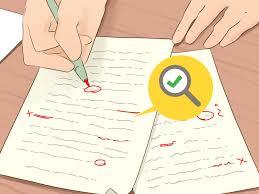 My remarks in the last two posts explain how a writer can make the best of their early readers. But some of those readers may have even more to offer. You may have writers who work in your genre among your beta readers. Or perhaps readers who are self-declared experts in your genre because they consume almost every book published. If you have people like this, whose knowledge and judgement you trust, they may be eager to go deeper and offer more specific critique, generally looking at two sides off each writing issue. For example:
My remarks in the last two posts explain how a writer can make the best of their early readers. But some of those readers may have even more to offer. You may have writers who work in your genre among your beta readers. Or perhaps readers who are self-declared experts in your genre because they consume almost every book published. If you have people like this, whose knowledge and judgement you trust, they may be eager to go deeper and offer more specific critique, generally looking at two sides off each writing issue. For example:What characters did you best connect with?
What characters need to be better developed?
Which lines, or scenes, that you particularly liked.
Which bits did you dislike, and why?
As you read, what did you meet that confused you or wasn’t clear?
What should I have elaborated on more?
What section did you want to skip over?
Where in the book did you think it was a good place to put the book down?
One last point: If you follow this plan you may get a lot of valuable feedback. You will need to consider it all, but not reflexively accept it. If you get any recommendations that you just can’t agree with, ignore them. But if a comment is repeated by more than a couple people, seriously consider it.
After reviewing the suggestions it’s time to get down to serious rewriting. And be sure to thank those people whose input was most helpful.
Published on April 28, 2019 13:33
April 16, 2019
Help Early Readers Help You
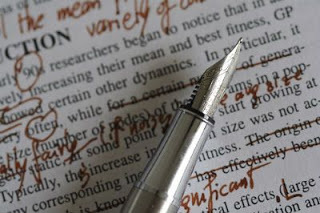 So-called beta readers can really help a writer see his work with fresh eyes. Did you say what you meant? Is the story as strong as you think it is? An outsider (or five) can help you improve your writing if they know what to do.
So-called beta readers can really help a writer see his work with fresh eyes. Did you say what you meant? Is the story as strong as you think it is? An outsider (or five) can help you improve your writing if they know what to do.So don’t just give them your manuscript and ask for their opinion. “It’s great!” feels good, but it won’t help you find the flaws. The trick is to ask specific questions. I like to make it easy by starting with a list of yes / no questions. These tell me if I’m generally hitting the mark.
Did the story hold your interest from the beginning?
Could you relate to the hero / heroine?
Did you know whose story it was and where you were quickly enough?
Were all of these people believable?
Was there enough tension, suspense, and conflict to hold your interest? In other words, was it intriguing?
Did you find the ending both believable and satisfying?
After I get those responses, in writing, I ask my early readers if they’d be willing to give me some more detail. For those who are still interested I have a list of questions that ASSUME a negative answer. These make it harder to be nice. For example, I COULD ask:
Was there a point where you began to lose interest about what would happen next?
But it’s too easy to just say no to that one. So I actually ask:
Where did you start to lose interest and become less excited about what would happen next?
That makes the reader really think about it. Likewise, these questions:
What inconsistencies did you pick up – places, characters, time lines…
What confused you? Annoyed you? Frustrated you?
Which character’s dialog did NOT sound natural to you?
Where was there too much description? Or not enough?
What mistakes jumped out at you In terms of spelling, grammar or punctuation?
I actually have more in-depth questions for those early readers who are (or want to be) writers themselves. I’ll share some of them next time.
Published on April 16, 2019 16:03
April 12, 2019
Prep Your Story for Early Readers
 professional editor and proofreader are very valuable, they can’t see your work the way a fan or avid reader can. So I bite the bullet and send manuscripts to a few of them before the real editor gets hold of it.
professional editor and proofreader are very valuable, they can’t see your work the way a fan or avid reader can. So I bite the bullet and send manuscripts to a few of them before the real editor gets hold of it.I still cling to my self-editing ritual. You know, hide the manuscript for a week, then read through a printed out copy. Naturally I correct any typos, misspellings and grammatical errors I spot, but that’s the least of it. I also read to make sure my style is consistent, that the story flows and the characterizations are consistent. Because of the genres I write I also need to double-check the timelines and logistics. I’m also checking to make sure there’s some sort of conflict in every scene.
When the manuscript’s as good as I can get it on my own I share it with four or five first readers. I’ve heard them called beta readers but I’m not sure why, since they are the first, the “alpha” readers. Over the years I’ve learned that they can’t be relatives or loved ones. They can’t be objective, even if they want to be. They either want to encourage your dream (and so automatically praise you) or they want to save you from wasting your time trying to be an author (and so are hyper critical.) I’ve had good luck with fans of people who write similar books, who are easily found on Facebook. The members of book clubs are also very good at giving feedback – they’ve practiced explaining why they did or didn’t like a book.
“Why” is the critical issue if you want to improve your work. “I loved it” or “I didn’t like it” don’t provide much guidance when you want to re-edit. To get the most out of your first readers, you need to ask specific questions from a reader’s (not writer’s) point of view. What questions? I’ll share my favorites next week.
Published on April 12, 2019 16:11
April 1, 2019
Reading your Writing Right!
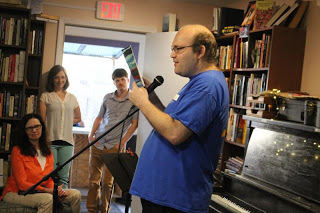 Last time I gave you some ideas on how to make your live reading more pleasing to your audience. Today I have a few more thoughts that may help.
Last time I gave you some ideas on how to make your live reading more pleasing to your audience. Today I have a few more thoughts that may help.Whatever you plan to read, have it neatly organized and annotated before you get on stage. No one wants to watch you searching through your book to find your reading. It’s unprofessional and looks like exactly what it is – you didn’t prepare.
Generally, I don’t read from my book. I copy the section I plan to read into a Word document. This way you can mark up the copy. Bold what you want to say louder. Cut out most of the dialog attributions – “Bob said” is often unnecessary when you’re reading out loud. Cut any line that slows down the action. Also, sometimes there’s a sentence (or even a paragraph) that’s important to the book but not really relevant to this section. You can cut those too. When you have the piece in exactly the shape you want it, print it out on regular paper. I usually print it in 14 point type, just to make things easier.
Now a few words about selecting your readings. First, make sure they represent your book. If it’s a dark, intense thriller, don’t read that one light hearted, humorous scene. It’s unfair to the people who might buy your book, and you don’t need reviews on Amazon about how your novel was not what the reader expected.
On the other hand, if you have a chance to read more than one excerpt from your novel, try to pick scenes that vary the tone. If one scene is heavy on the dialog, try to find one that’s all action.
All that being said, you also need to choose a reading that is appropriate for the audience. In some situations profanity, sexuality or strong violence may be unacceptable. In a library or book store, children may wander in at any time. Noir at the Bar, thanks to the location, has no such issues. And radio and TV have their own limitations. When in doubt ask the host where the lines are before you accidentally cross them.
Also, be careful to avoid spoilers. Maybe you think the big finish or the vital clue is the best scene in the book. You might be right, but if you give too much away your listeners won’t feel there’s any reason to buy your book. You want to give them a feel for how good your writing is, but don’t give away the entire plot.
Finally, once you know you’ve picked the right section to read: practice, practice, practice. Read it out loud until you know how to modulate your voice, you know where the emphases go, where a little pause will help, where you should slow down for tension. Remember, it’s a performance and you want to keep your listeners entertained! That way, they’ll want to take that experience home with them.
Published on April 01, 2019 13:55
March 30, 2019
Reading your Writing
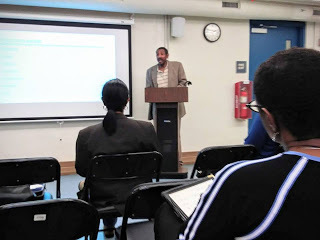 The popularity of the Noir at the Bar series shows the value of public readings, even for those of us who are not poets. It can give a writer exposure to people who might not pick up his work to read it on their own. The kind of fans you make when you meet in person tend to be more solid, planks in your author platform. And, at least for me, it’s great fun. But not everyone is naturally good at it. This week I’ll offer some helpful ideas.
The popularity of the Noir at the Bar series shows the value of public readings, even for those of us who are not poets. It can give a writer exposure to people who might not pick up his work to read it on their own. The kind of fans you make when you meet in person tend to be more solid, planks in your author platform. And, at least for me, it’s great fun. But not everyone is naturally good at it. This week I’ll offer some helpful ideas.First, remember that listening is different from reading to yourself. When you are listening, long descriptions and exposition don’t hold your attention well. So choose your reading selection carefully.
Also keep in mind that the people in your audience are not there to be educated about your writing. They have come to be entertained. They don’t need to understand the entire plot, they don’t need to meet every character in your book, and they surely didn’t come to be impressed by your sweet turns of phrase.
What works well is a scene. Pick one with sharp dialog and plenty of action. And it’s best to find a scene with only two or three characters. When you’re listening it’s hard to keep track of a long list of people who are new to you anyway.
When choosing a selection to read ask yourself, is this piece emotionally engaging? Humor works well. Otherwise, find something with suspense, intrigue, and lots of conflict. If you can’t appeal to the audience’s sense of humor, appeal to their hearts, or to their curiosity.
For your reading to make sense, you may have to set it up with some back story or explanation about the characters. Don’t let this eat into your available time. If you find it will take you a minute to prepare the audience for your reading, I’d suggest you find another section to read.Most reading venues have time limits. Five minutes is common. Even if they don’t, shorter is always better. If you are offered more time, consider finding two short sections to read and chat a bit in between.
And If you ARE one of several readers with a solid time limit, make sure you stick to that limit. Not only is it rude to go over your time limit, it will prompt people who organize such events to stop inviting you. How can you be sure? Practice your reading several times, timing yourself.
I have more good ideas for live readings, which I’ll share next time.
Published on March 30, 2019 15:44
March 19, 2019
More Essential Elements of Romance Novels
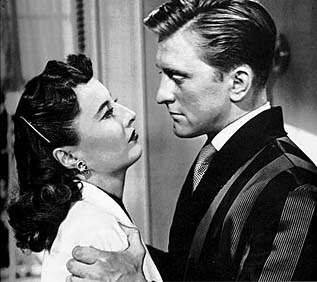 To succeed in the romance genre you have to have two great lead characters and you have to get them together in one of the ways readers are already comfortable with. But there are a couple of other things you have got to get right if you want that book to sell to a publisher OR to readers.
To succeed in the romance genre you have to have two great lead characters and you have to get them together in one of the ways readers are already comfortable with. But there are a couple of other things you have got to get right if you want that book to sell to a publisher OR to readers.For one thing, you have to be very careful in building those intimate love scenes. I’m not talking sex scenes necessarily, but all physical intimacy: kisses, hugs and those almost-did-it scenes. Some romances will have hard R-rated scenes. Aside from out-right erotica, a lot of urban fantasy style romances can be pretty raw. Some, like YA romance and most historical romances, skip sex completely. All the rest keep it PG, or maybe PG-13.
But whether it’s an erotic scene or jus a passionate kiss, it has to be written with care. These scene need to have lots of buildup to make the readers anticipate the encounters eagerly. And please avoid romantic language filled with those silly euphemisms that can turn your work into a laughable parody of real romance writing.
How do you get it right? I suggest you read romances and look very closely at those intimate scenes you feel are well written. The more you read, the more you emulate your writing heroes, the better you’ll get.
Almost as important as those scenes is to respect your secondary characters. Remember, when your heroine or hero is agonizing over a confusing conversation or trying to decide if they will see that other person again, they will want to ask someone for advice. That friend, roommate or coworker is absolutely critical to the story. Characterization of the main couple is important of course, but it is the coworkers, neighbors, family, friends and jealous enemies (and “frienemies” that bring the story to life. Those people place your couple in a real world. It’s good for each of your lead characters to have a best friend, that person they turn to for support. They are often a little quirky, very likeable and serve as a sort of Greek chorus for the main couple. Just don’t make them TOO interesting. They shouldn’t overshadow the hero and heroine. But develop them well. After all, one of them could easily be the star of your next novel. That can make for a great sequel, since your readers already know the cast and the overall setting. If this plan works for you, you’ve got a series on your hands.
Get these things right and you will have written a romance novel that no publisher will want to turn down.
Published on March 19, 2019 17:04
March 13, 2019
Getting Your Romantic Leads Together
 For the last couple of weeks I’ve been talking about the process of writing a great romance novel. Once you have your characters in place, the next challenge is getting them together in a way readers will enjoy. The best ways are probably the most popular. Either the pair know each other but just don’t see each other in a romantic way or they just don’t like each other. Your job as a writer is to change that in a fun way.
For the last couple of weeks I’ve been talking about the process of writing a great romance novel. Once you have your characters in place, the next challenge is getting them together in a way readers will enjoy. The best ways are probably the most popular. Either the pair know each other but just don’t see each other in a romantic way or they just don’t like each other. Your job as a writer is to change that in a fun way.If you’re moving them from friends to lovers it works best when there’s a big project or a major conflict holding their attention. Distracted this way they won’t notice how good a fit they are or how much they really like each other. That’s why they don’t get together until the very end.
To move from enemies to lovers the couple should conflict in some basic, essential way. Maybe one’s a total extravert while the other is an introvert. Or how about the spoiled rich kid who can’t relate to the hard working single parent? (switch the genders and you’ve got the movie Overboard.)
Want to challenge yourself more? Take them from enemies to friends, and then to lovers. It is, I think, the most realistic approach. The two lead characters hate each other when they meet. As they get to know each other they become friends and finally fall in love. This approach allows for a real connection between the two, and leave space for lots of tension. One well-known example would be Pride and Prejudice.
If you created a romantic hero with serious psychological scars the story can be about the heroine helping him heal. It’s a ready source of conflict. And the damage from the past can endanger the future of their relationship. But in the process he can show her how valuable she is, and her potential as a healer. In the end they both realize how valuable their time together is, which leads to romance.
Reunion is also a popular romance approach, where the hero and heroine get back together. The pair could be separated for a long time, but there are other more interesting devices. What if one of them suffers from amnesia and just doesn’t remember their past partner? Or maybe some supernatural event has separated them. The fact that they find each other again can be seen as proof that they are fated to be together, true eternal soul mates.
What happens after you use one of these familiar plans to bring the couple together? I’ll have some tips on how to proceed next week.
Published on March 13, 2019 17:16
February 26, 2019
What Makes Great Romantic Leads?
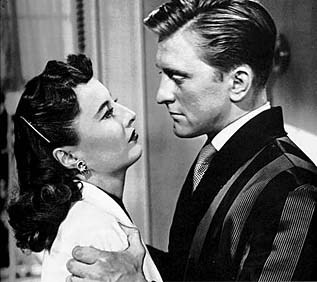 Last week I started talking about what we at Intrigue Publishing look for in an incoming Romance manuscript. Today I’ll talk a bit about the two most important elements of a romance novel – The two lead characters who will become romantically linked.
Last week I started talking about what we at Intrigue Publishing look for in an incoming Romance manuscript. Today I’ll talk a bit about the two most important elements of a romance novel – The two lead characters who will become romantically linked.Romance novels are always character driven, so readers need to really like and care about the heroine and her hero. And remember, conflict is what makes a story. I understand the temptation to make the male lead a muscular, handsome guy who blows in and sweeps the female lead off her feet. But good looks are not what makes a great romantic leading man. What readers really want is a man who’s vulnerable and shows deep emotion.
This man needs to have a past worth escaping. That could mean a single traumatic event or just a challenging childhood. Maybe his mother hated him or his last woman broke his heart. It’s okay for the hero to look and act totally confident, but inside it’s better for him to be insecure.
So we start with a man who is damaged, and he meets a woman who pulls him in and sees past his tough exterior. She is the key to his redemption and by the end of the book he should be a happier man, a changed man, and we should see that it is all due to her.
The female lead should be troubled as well, but in some different way. If you boil down popular romances, I think you’ll find the most common plot to be some variation of the damsel in distress being helped out of a jam by the man. In the process she learns of HIS big problem and helps him solve it. Often his problem is learning to trust, or getting over the woman who broke his heart, or just learning to be open again.
If you start with a strong man, remember the woman needs to be just as strong. If she starts out as a timid, insecure woman (historicals often call for this) the story should gain courage by the end of the story, and be prepared to stand up for herself.
Even if they appear to be perfectly matched, these two people can’t fall in love right away. They have to have conflicts, and problems and issues to Their relationship should not be static or smooth, but rather should be dynamic.
If you want your leading couple to engage the reader and be realistic, then they must each be a fully developed character with flaws, strengths and realistic motivations. Then you must take those two characters and push them into one of the commonly recurring literary devices or motifswith which your readers will be familiar. I’ll offer a few examples of these next week.
Published on February 26, 2019 16:06
February 17, 2019
What Makes a Good Romance Novel?
 When Intrigue Publishing began publishing romance novels I must admit I looked on them as any other piece of fiction. Over time I’ve developed some guideposts to tell me if the manuscript I’m reading is likely to be a winner when I reach the end. Now it occurs to me that if authors know what I’m looking for they’re more likely to send in winners. So here are a few essential elements.
When Intrigue Publishing began publishing romance novels I must admit I looked on them as any other piece of fiction. Over time I’ve developed some guideposts to tell me if the manuscript I’m reading is likely to be a winner when I reach the end. Now it occurs to me that if authors know what I’m looking for they’re more likely to send in winners. So here are a few essential elements.First, figure out what subgenre you want to work in. We like contemporary romances, but historicals are good too. Maybe you want to write a young adult romance, or a fantasy or paranormal book. If your heart leads you toward erotica at one end of the scale or religious romance at the other, then write that. But don’t bother to submit to Intrigue. We can’t serve those subgenres best. How do you choose? You should probably write the kind of romance you most enjoy reading. And when you submit be sure to clearly state which subgenre your book fits into.
We feel romance novels are perfect escape fiction so the setting is important. It needs to be clear enough that readers can get lost in your story. And be sure that you like that setting because like other romance writers you may want to create a series based on the first book. So you want the setting to be a place you and your readers will want to go back to again and again.
Contemporary romances usually have small, close settings. Small towns and college campuses are popular. Even in a big city, there should be a local place (a bar, a diner, an office, even a bookstore) where the main characters meet and hang out. This is where friends and neighbors chat and more importantly, gossip. It’s good to see a setting in a romance where the significant characters can’t help but see each other.
In an historical, your setting may be a village being attacked by barbarian hordes. In a paranormal, maybe the one forest where the shape-shifters can survive. Regardless of the place, the setting in every good romance must feel real. It should be a totally immersive experience. I’d suggest you create a map so directions remain consistent, and model the office, or diner where people meet after an actual place you’re familiar with.
Next week I’ll offer some tips about the main characters in romance novels.
Published on February 17, 2019 16:07
February 11, 2019
Tips to Sharpen Your Dialog
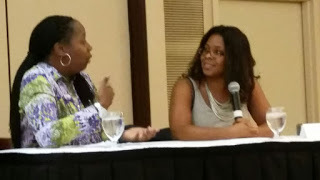 Recently a fellow writer told me his dialog didn’t seem to work but he didn’t know why. When I read a bit of his work I thought I knew the issue he was sensing. I thought what was between the quotation marks was really good. The problem was, his dialog was ONLY dialog. So I made some suggestions.
Recently a fellow writer told me his dialog didn’t seem to work but he didn’t know why. When I read a bit of his work I thought I knew the issue he was sensing. I thought what was between the quotation marks was really good. The problem was, his dialog was ONLY dialog. So I made some suggestions.He had gone to a style where he had almost totally eliminated dialog tags. What I mean is, he cut the “he said” or “she asked” after each comment. I agree that having those things after every spoken line can be boring and repetitive. And logically, if only two people are talking you shouldn’t nee them at all. But, in my opinion, that’s putting a lot of responsibility on the reader. And while most readers can figure it out, making that effort can pull them out of the story. I think it’s okay to make it easier for the reader. Throw in a “she said” every two or three exchanges, or even a “Mary said” to remind us of a character’s name. And if there are more than two people in the room, go ahead and tag everyone’s dialog. It can’t hurt.
I also think we should help our readers see what’s happening, like a movie. That means, tell them what these people are doing. No one JUST talks. They’re also sipping coffee, pacing the room, fiddling with the change in their pockets or following that person walking past just outside the window. Of course, for that to work, the writer has to be able to see the scene. I think figuring out what my people are doing while they talk helps cement their characters. It might help to show how interested they are in the conversation. And it will certainly help keep your readers tied to the location. If they can see where the scene takes place it has more impact.
My last tip to this writer was to try to include more emotional context to the dialog. When I started out I used way too many adverbs for this (He said angrily, she said hatefully.) I learned that adverbs in dialog tags are a major pet peeve of most editors. But stripping them out gave the reader less information about how the people felt. Over time I’ve learned to convey that same information by showing body language, facial expressions and tone of voice. Where did he pause before answering? When did she give a big sigh? When did she cross her arms and turn her head with her nose in the air? At what point did he roll his eyes. These are all things people do to communicate their feelings, purposely or not.
So go back through your dialog and see how you could use these little tips to make your dialog stronger.
Published on February 11, 2019 12:25



